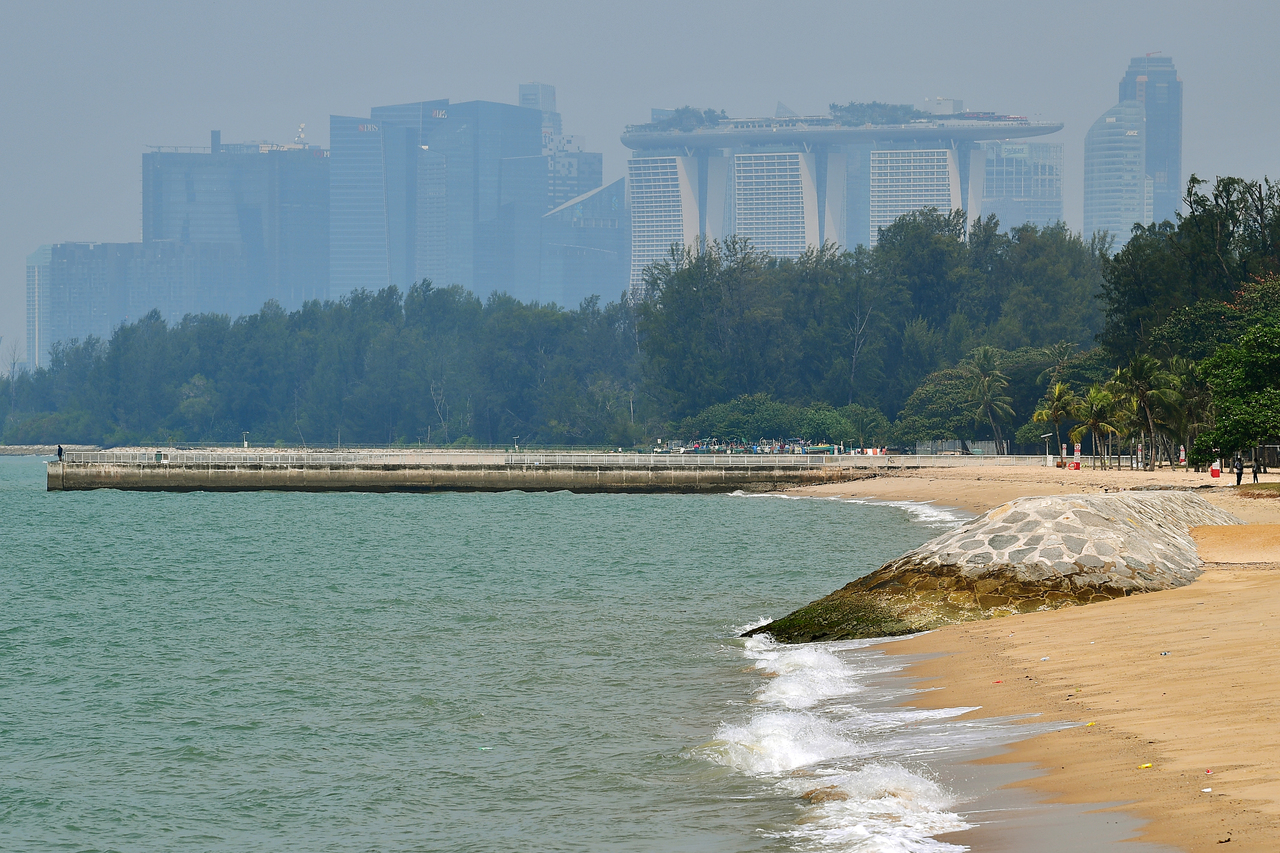PUB working on computer modelling system to prepare for floods and rising sea levels
Sign up now: Get ST's newsletters delivered to your inbox

The system will simulate and evaluate both coastal and inland flood risks separately or together.
PHOTO: ST FILE
Follow topic:
SINGAPORE - Singapore is taking steps to better prepare itself for flooding episodes driven by climate change by developing the nation's first computer modelling system that can help predict how sea level rise and heavier rain could impact the nation.
Work has begun on the $13.4 million Coastal-Inland Flood Model, being co-developed by national water agency PUB, the National University of Singapore (NUS) and water management solutions provider Hydroinformatics Institute.
This will help PUB predict and take steps to pre-empt flooding in different scenarios - a priority for this low-lying nation, where about 30 per cent of the island is less than 5m above the mean sea level.
Sea levels around the island are now about 14cm higher than before 1970, according to the Meteorological Service Singapore's 2019 climate assessment report.
The system will simulate and evaluate both coastal and inland flood risks separately or together to analyse the flood risk for different scenarios.
The coastal model will simulate potential changes in waves near the shore as well as storm surges within the region under different climate change scenarios.
The inland model, on the other hand, can simulate flooding in the urban areas caused by various factors such as heavy and intense rainfall, and changes to sea level.
Advanced modelling techniques will be used to enhance the accuracy and speed in simulating flows caused by rain within Singapore's densely built-up water catchments.
The computer model will take four years to build, and will be continually updated and improved, along with new climate data and developments in climate science, said PUB in a press release on Friday (April 9).
The computer model will help PUB plan coastal adaptation measures, evaluate the effectiveness of proposed coastal protection infrastructure, and improve operations management, the agency added.
The Coastal-Inland Flood Model was announced by Minister for Sustainability and the Environment Grace Fu during the committee of supply debate on the budgets of individual ministries last month.
The Ministry of Sustainability and the Environment also announced last month that protection strategies in the City-East Coast stretch, Lim Chu Kang, Sungei Kadut, and around Jurong Island will be completed by 2030.
PUB will also invest another $1.36 billion on drainage works over the next five years, after pumping $2 billion into such projects over the past decade.
In building the computer model, PUB officers will work closely with the team from NUS and Hydroinformatics Institute during the entire project duration to share their experience with existing modelling systems.
This will also allow PUB to build new expertise in-house to develop, test and validate coastal protection technologies and concepts. When completed, PUB will operate the model.
The project team building the computer model will be led by , Distinguished Professor Philip Liu of the NUS Department of Civil and Environmental Engineering.

Prof Liu is internationally recognised for his work on coastal engineering and wave modelling, and has been instrumental in developing tsunami and coastal disaster resilience technology in Taiwan and the South China Sea region.
"We are developing (the model) specifically for Singapore's unique urban and coastal environments," said Prof Liu, who added that the challenge would be ensuring that data collected for the model is accurate and up-to-date.
"The modelling techniques, once ready, are transferable to other coastal cities in the tropical region in the future, where viable."
As oceans warm, water expands, contributing to sea-level rise. Rising temperatures are also causing ice sheets to melt, further nudging up sea levels.
Climate change will also lead to erratic rainfall, such as dry spells and bouts of more intense rainfall, which can contribute to flooding.
Prof Liu added: "In anticipating continued climate changes, the development of a Coastal-Inland Flood Model is timely and will help to safeguard both our coastlines and our collective future against severe weather and rising sea levels."
Ms Hazel Khoo, director of PUB's Coastal Protection Department, said: "Coupled with the upward trend of average annual rainfall and frequency of heavy rainfall that we have observed in recent years, the development of this model is timely as we embark on the monumental task of building coastal defences for Singapore.
She added that given the uncertainties in climate science, protecting the country's coastlines will always be a work in progress, but Singapore aims to stay ahead of the curve.
Hydroinformatics Institute director Martin Lechner said the company aims to provide faster, more accurate and more visual water management insights to the model.
Other local projects by the company include building a toolbox that can predict and simulate floods resulting from heavy rainfall, and a model that identifies how water quality in the Marina Reservoir can be affected.

